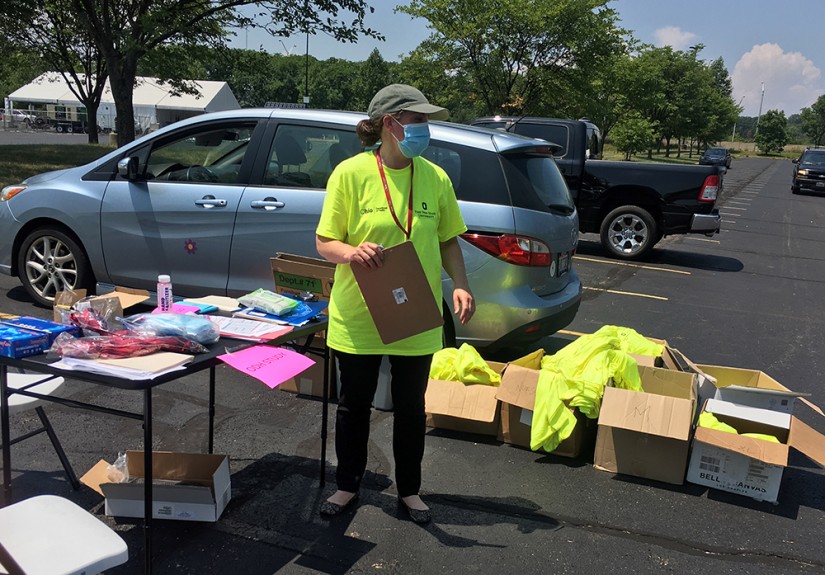Ohio State public health researchers estimate statewide COVID-19 prevalence
About 1% of sampled adults had COVID-19 in July, study finds

A statewide study of COVID-19 prevalence found that almost 1% of Ohioans had current infections and 1.5% had antibodies to the virus. If applied to the entire adult population of the state, that would correspond to around 80,000 Ohio adults with active COVID-19 and approximately 133,000 with past COVID-19 during the research period in July.
An Ohio State research team collaborated with the Ohio Department of Health, local health departments across the state, public and private laboratories, and other government agencies to conduct the study. Over 20 days, 727 adults from throughout the state participated in the research by giving blood and nasal swab samples, which were tested for current and past COVID-19.
Dr. Abigail Norris Turner, an associate professor at the Colleges of Medicine and Public Health and an infectious disease epidemiologist, led the research team. Dr. Norris Turner appeared on Gov. Mike Dewine’s Oct. 1 press conference to discuss the results of the study and what they mean.
“What we can say with confidence is that some hundreds of thousands of Ohioans have had COVID-19, and millions of Ohioans remain susceptible,” Norris Turner said. “The same public health efforts which have worked to keep the prevalence of disease low are still needed to prevent ongoing transmission.”
An important note is that antibody tests only provide a snapshot of the last two to three months, and so the “antibody numbers don’t tell us who’s been infected since the beginning of the pandemic in Ohio,” she said. “For a study done in July, it’s likely only a look back to about the middle of April.”
Total reported statewide cases from the same 20 days in July as the study are 3.5 times lower than what the research team’s estimates suggest. This finding is similar to other United States reports that compare diagnosed COVID-19 cases to total COVID-19 cases.
The vast majority of adults in the study self-reported adhering to public health safety practices such as physical distancing, wearing face coverings outside the home, limiting close contact with people outside their households and avoiding gatherings of 10 or more people.
“One conclusion to this study is that COVID-19 continues to surprise us, and so we shouldn’t make any optimistic or pessimistic predictions about short- or long-term immunity to disease,” Norris Turner said.
Primary Ohio State researchers involved in this study include Payal Chakraborty, Sam Clark, Maria Gallo, Robert Hood, David Kline, Stan Lemeshow, Megan Lindstrom, Gerard Lozanski, Amanda Luff, William Miller, Alison Norris, Michael Para, Elisabeth Root and Morgan Spahnie. The team was supported by additional faculty and students from the Colleges of Arts and Sciences, Medicine and Public Health.
About The Ohio State University College of Public Health
The Ohio State University College of Public Health is a leader in educating students, creating new knowledge through research, and improving the livelihoods and well-being of people in Ohio and beyond. The College's divisions include biostatistics, environmental health sciences, epidemiology, health behavior and health promotion, and health services management and policy. It is ranked 22nd among all colleges and programs of public health in the nation, and first in Ohio, by U.S. News and World Report. Its specialty programs are also considered among the best in the country. The MHA program is ranked 5th and the health policy and management specialty is ranked 21st.